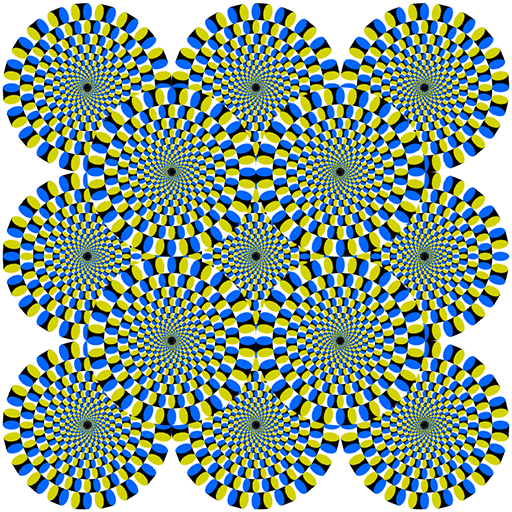3.3 Rotating snakes illusion
Visual illusions demonstrate the differences between peripheral and foveal vision. In this ‘rotating snakes’ example, the circles appear to be moving. In fact, this is just a static image. If you fixate on the centre of one of the circles, it will stop moving.
Activity 6 Rotating snakes illusion
Why might this be the case? Note down what you think might cause this illusion, or any thoughts you have on your experience of it.
Discussion
When you view the image, your peripheral vision produces the sensation of movement. When you fixate, and use foveal vision, the motion stops. Our peripheral visual fields are specialised for motion detection, whereas our central (foveal) vision is specialised for colour and detail. The direction that the wheels move in, and the strength of the effect, are dependent on the background luminance. When presented on a bright white background, the wheels appear to move more slowly than when presented on a grey background. The motion experienced by most people viewing this example is believed to come from the arrangement of the components of the ‘snakes’. These cause asymmetric luminance steps, which in turn trigger motion detectors, allowing us to perceive the static image as moving.

